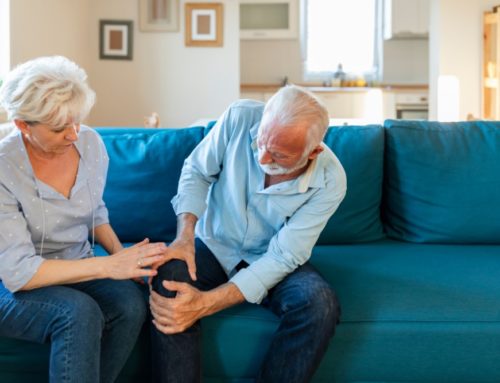Arthritis is a condition affecting the joints in the hands, arms, shoulders, feet, lower back, hips, and knees. There are several types, all of which have a few common symptoms, including tenderness, pain, inflammation, stiffness, warmth, and redness. Though the severity may vary from day to day, your symptoms may be extra uncomfortable at times. Learning what triggers arthritis pain is the first step to avoiding painful flare-ups.
Unexpected arthritis pain isn’t pleasant, but there are a few ways to manage it. During a flare-up, doctors often recommend physical therapy since it is one of the most powerful pain-prevention tools. This therapy and exercises improve strength, mobility, and range of motion, while therapists offer advice on adjusting daily activities to reduce pain.
For more information about arthritis triggers and how to deal with them, keep reading.

Triggers Of Arthritis Pain
Arthritis is a degenerative disease with no cure, so the symptoms will never disappear completely. Unfortunately, increases in arthritis pain make even the most manageable symptoms almost unbearable. Learning the triggers may not help you avoid them, though they can help you prepare. The following are the most common causes of painful flare-ups.
- Stress – Though stress mainly causes emotional and mental issues, it can also cause physical symptoms for those with arthritis. It’s believed that stress increases cytokines production, which increases inflammation and causes joint pain. Higher pain levels then raise stress levels even more in a vicious cycle.
- Physical inactivity – Sitting or lying too long is harmful to your joints’ health. They need strong muscles to keep healthy. Consider daily exercises to stay away from arthritis pain.
Other triggers:
- Diet – Certain foods increase inflammation and can lead to painful arthritis flare-ups. Remember that everyone is different – watch what you eat and what may cause inflammation to your arthritis. The foods that may cause pain can be red meat, refined carbohydrates, gluten, sugar, saturated and trans fats, processed foods, caffeine, and alcohol.
- Obesity – Another possible arthritis pain trigger is sudden or excessive weight gain. The extra weight puts more pressure on your various joints, especially those of the hips, knees, and spine.
- Weather changes – Though it sounds odd to healthy individuals, those with arthritis often notice higher levels of discomfort when the weather changes. It most commonly occurs when the temperature drops or humidity rises. The reasons may vary, from reduced activity during these times or a stiffening of the joints. Alterations in the barometric pressure could also affect arthritis.
- Too much activity – When you stand too long and you’re not feeling any pain, you may attempt to do chores or activities your arthritis normally restricts. Though you may feel good while doing them, those extra activities can cause inflammation, leading to uncomfortable flare-ups. Excessive activity may also injure the joint, increasing deterioration and pain.
What helps to avoid them?
The best option is regular physical activity for arthritis. Though doing too much might exacerbate the issue, gentle, low-impact and regular exercises do reduce pain.
Such activities include yoga, tai chi, walking, biking, swimming, gardening, dancing, and water aerobics. You may also want to consider physical therapy to learn the proper techniques to avoid arthritis pain. You may experience pain, swelling, and stiffness at first, so take things slow to avoid discomfort and injury.
Reducing stress and doing exercises regularly reduces arthritis pain, anxiety, and depression while boosting mood. You can also try ointments, medications, and medical treatments to manage arthritis pain with your doctor’s approval.
Dealing with arthritis pain and the triggers aren’t pleasant, so finding ways to decrease them is essential.
This content comprises informative and educational resources only and can not be considered as a substitute for professional health or medical guidance. Reliance on any information provided in this article is solely at your own risk. If you have any inquiries or apprehensions about your medical condition or health goals, talk with a licensed physician or healthcare provider.






Leave A Comment